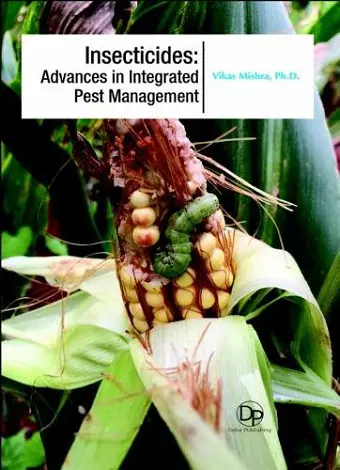Insecticides
Advances in Integrated Pest Management
Format:Hardback
Publisher:Delve Publishing
Published:30th Nov '16
Should be back in stock very soon

Integrated Pest Management (IPM) is an effective and environmentally sensitive approach to pest management that relies on a combination of common-sense practices. IPM aims to suppress pest populations below the economic injury level. IPM programs use current, comprehensive information on the life cycles of pests and their interaction with the environment. Integrated pest management depends on a systematic plan to control pests with deep emphasis on the eradication or minimizing the effect of pests on crops in an effective, economical and environmentally friendly manner. With geographical variation and in accordance to the crop requirements, integrated pest management varies from site to site. Despite of site specific variations, the key components of the integrated pest management involves identification and enumeration of pest populations, impact on crop, assessment and utilization of best available pest management techniques. Development of insecticide resistance, dominance of secondary pests, effect of pest control methods on the non-target organisms, environmental impact and cost evaluation may change the course and effectiveness of the employed pest control measures and thus each of the these components requires a thorough examination in a site dependent manner. The aim of this book is to provide an overview of integrated pest management with highlights on the areas of major concerns. The book compiles case studies detailing different pest control measures and their use in different geographical, crop and entomological disciplines. Integrated pest management, alternative insect control strategies, ecological impact of insecticides as well as pesticides and drugs of forensic interest are included. The content coverage in this book should appeal the reader’s concern to upkeep rational decisions about the use of pesticides. IPM emphasizes the growth of a healthy crop with the least possible disruption to agro-ecosystems and encourages natural pest control mechanisms.
Entomologists and ecologists have urged the adoption of IPM pest control since the 1970s. IPM allows for safer pest control. This includes managing insects, plant pathogens and weeds. Globalization and increased mobility often allow increasing numbers of invasive species to cross national borders. IPM poses the least risks while maximizing benefits and reducing costs. Synthetic pesticides are used as required and often only at specific times in a pest’s life cycle. Many newer pesticides are derived from plants or naturally occurring substances (e.g.—nicotine, pyrethrum and...
ISBN: 9781680957570
Dimensions: unknown
Weight: unknown
212 pages